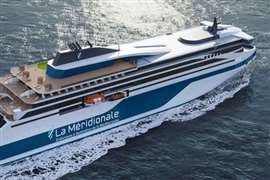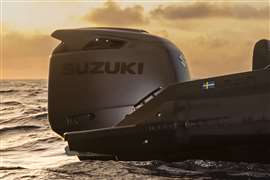HFO ban in Arctic waters goes into effect
16 July 2024
On July 1, a United Nations rule forbidding ships that travel through Arctic waters from carrying heavy fuel oil (HFO), either as fuel or cargo, went into effect.
 Photo: wifesun via Adobe Stock
Photo: wifesun via Adobe Stock
The amendment to Annex 1 of the International Convention for the Prevention of Pollution from Ships (MARPOL) was adopted in June 2021 in an effort to prevent damage to the delicate Arctic environment. A May 2017 report by the International Council on Clean Transportation (ICCT) regarding HFO in Arctic shipping said that HFO is of particular concern in the region due to the difficulty in cleaning spills and the emissions of black carbon (BC) when it is burned as fuel.
According to an American Bureau of Shipping (ABS) regulatory brief about the ban, the International Maritime Organization (IMO), which developed MARPOL, defines HFO as any oil aside from crude oil that has either a density greater than 900 kg/cu. m. at 15°C (approx. 56 lb./cu. ft. at 59°F) or a kinematic viscosity greater than 180 sq. mm/sec. at 50°C (0.28 sq. in./sec. at 122°F).
Exemptions to the ban include ships that are “engaged in securing the safety of ships or in search and rescue operations, and ships dedicated to oil spill preparedness and response,” according to the amendment.
There are some additional exemptions that are set to expire as of July 1, 2029. These will allow ships in certain circumstances to avoid the ban. For instance, a Reuters story about the ban said the exemptions include:
- Ships built after 2017 that have protected fuel tanks, which reduce the likelihood of a spill.
- Waivers granted by Arctic coastal nations to ships flying their flags while in sovereign waters.
In a September 2020 white paper, the ICCT noted that if the ban had been implemented in 2019, these exemptions would only have eliminated 30 percent of the HFO carried through the Arctic and 16 percent used as fuel. BC emissions would have been reduced by only 5 percent.
The white paper also indicated that between 2015 and 2019, HFO use in the Arctic grew by 75 percent.
According to the intergovernmental forum Arctic Council, the past decade has also seen an increase in Arctic shipping — by 37 percent, or about 500 unique ships. 2023 saw 1,782 unique ships pass through the Polar Code region — that area in the Arctic Ocean defined by the IMO’s International Code for Ships Operating in Polar Waters (Polar Code).
The Arctic Council said fishing vessels are the most common type of ship in the Arctic, amounting to more than a third of all unique vessels. The next most common type is general cargo ships, representing about 10 percent.
However, shipping through the Arctic could be poised to increase in the future. A January article in The Economist explored the viability of Arctic shipping considering the Houthi rebel attacks on commercial shipping vessels in the Red Sea that are causing many to avoid the region. According to that story, Arctic shipping could not only significantly reduce the length of journeys currently made via the Suez Canal but could provide viable routes to those being used as an alternative to going through the Red Sea.
One reason is the reduction in Arctic ice. NASA Climate Science published data saying the minimum extent of Arctic sea ice, which occurs each September, is shrinking by 12.2 percent every 10 years. In 2023, it hit 4.37 million sq. km. (1.69 million sq. mi.), which is down from 7.54 million sq. km. (2.91 million sq. mi.) in 1980 — a decrease of about 42 percent.
The sea ice first dropped below 6 million sq. km. (2.3 million sq. mi.) in 1999, according to NASA data. Eight years later, in 2007, it fell below 5 million sq. km. (1.9 million sq. mi.) for the first time. 2012 saw the September ice pack drop to its lowest point — 3.39 million sq. km (1.31 million sq. mi.).
Additionally, Russia, which controls the Northern Sea Route — one of several Arctic shipping routes — has long eyed the route as an alternative to going through the Suez Canal, according to an October 2023 Reuters report. Russia increased its forecast by 50 percent for cargo shipped via the Northern Sea Route by 2030, the story said.
A July 1 Euronews story about the HFO ban said that Russia currently operates over 800 ships in the Arctic and is not planning to comply with the ban on HFO. According to Reuters, however, Russia’s compliance with the ban remains unclear.
Nonetheless, The Economist said shipping via the Arctic represents only a fraction of global totals. While between 1,700 and 1,800 unique ships currently pass through the region, 2022 saw more than 23,000 unique vessels go through the Suez Canal, and 14,000 through the Panama Canal.
Reuters said similar prohibitions for Antarctic waters have been in effect since 2011, although no cargo moves through those waters.








